By Tan TE
AV Designs held a launch event for the new Bryston Model T Signature loudspeakers on 13/4/2013. Here is a set of photos from the event.
Tony and James talking about the Bryston Model T Signature's design philosophy and kicking off the listening session
A closer look at the Model T Signature unique double tweeter configuration. Note the “Bryston' stamp on the tweeters marking them as proprietary
The external crossover box. The Model T Signature can be tri-amp'ed / tri-wired
The outputs of the external crossover are fed into 3 pairs of loudspeaker terminals
3 bass reflex ports at the back of the loudspeaker
“Good boy!” James must be very pleased with the results he has achieved with the Model T.
During the demo, the Model T Sig sounded big and dynamic, with excellent frequency extensions. The sound was clean but not clinical and it sounded musically coherent with a wide variety of genres. Excellent value for money in my opinion.
.
Bryston Model T Specifications:
- Frequency Response: 25Hz to 22Khz (+/- 3dB)
- Impedance: 4 Ohms (nominal)
- Sensitivity: 91 dB SPL @ 1 meter with 1 watt (anechoic)
- Maximum SPL: 118 dB SPL @ 1 meter
- Recommended Power: 10 watts to 500 watts RMS
- Tweeter: Dual 1.0″
- Midrange: Dual 5.25″
- Woofer: Triple 8.0″
- 52.5” H x 10.5” W x 16.5” D
- 1334mm H x 267mm W x 419mm D
Contact James Tan or Tony Low of AV Designs at 03-21712828 to listen to the Bryston Model T Signature.

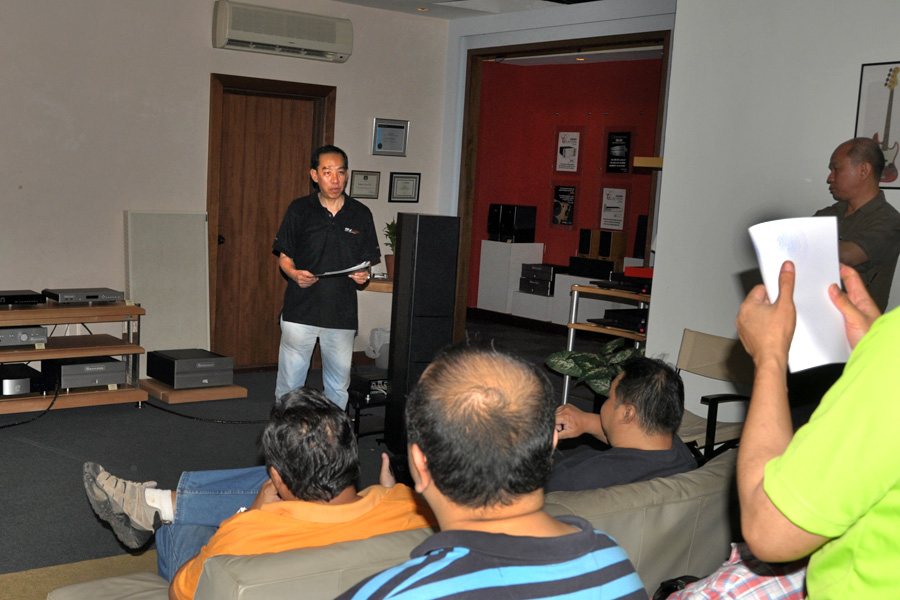
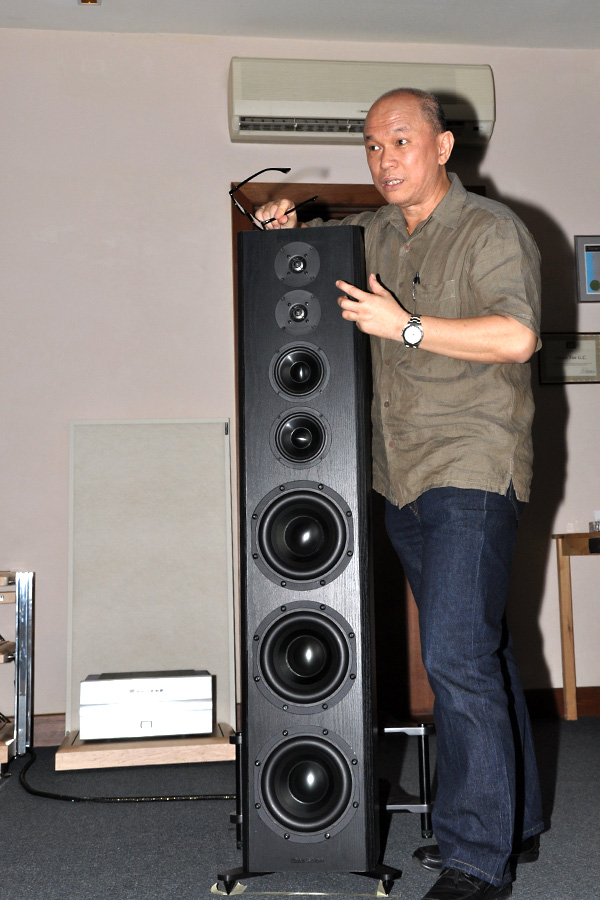
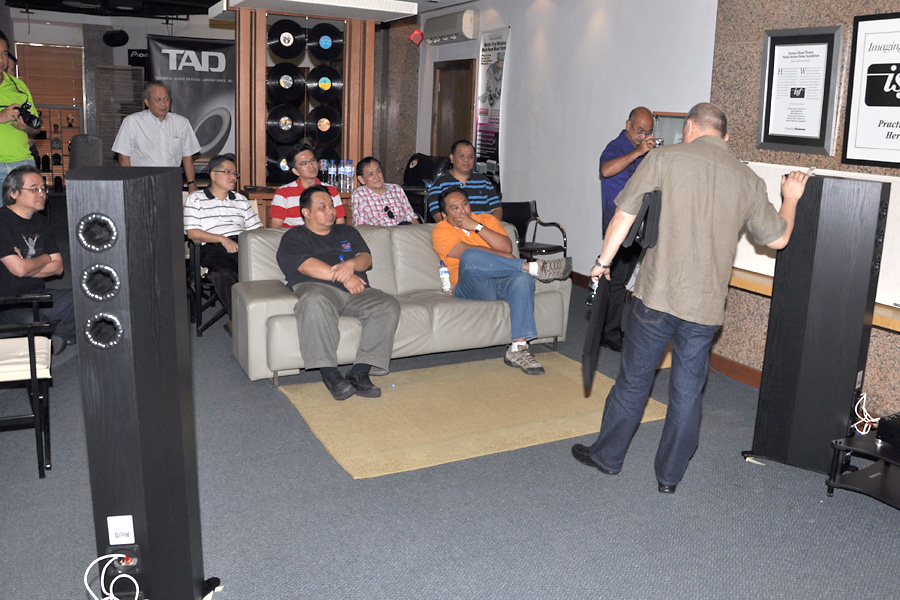
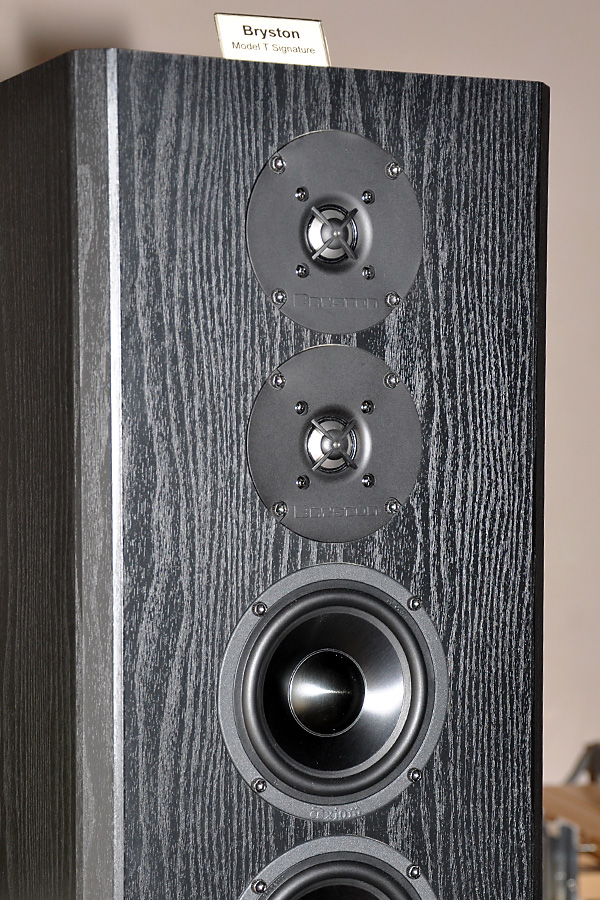
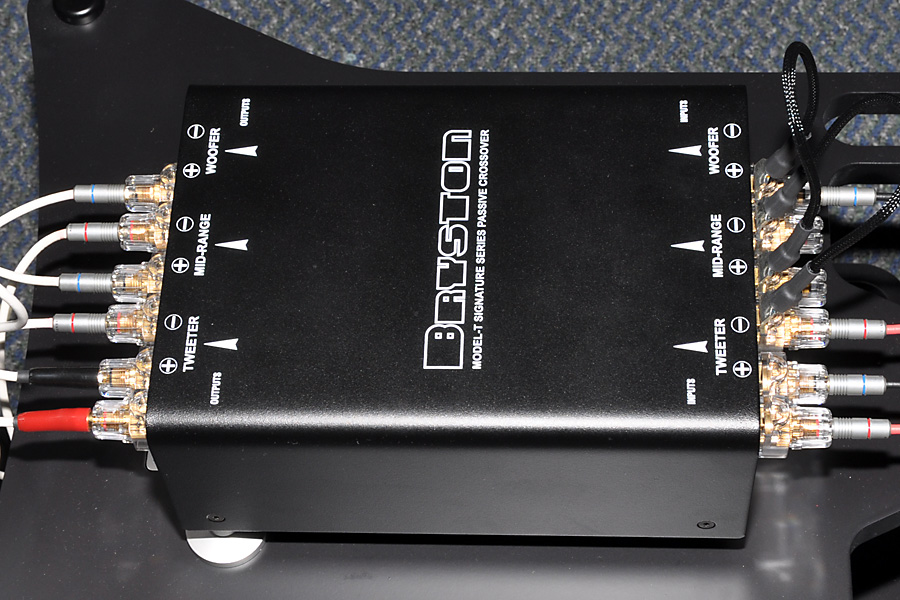
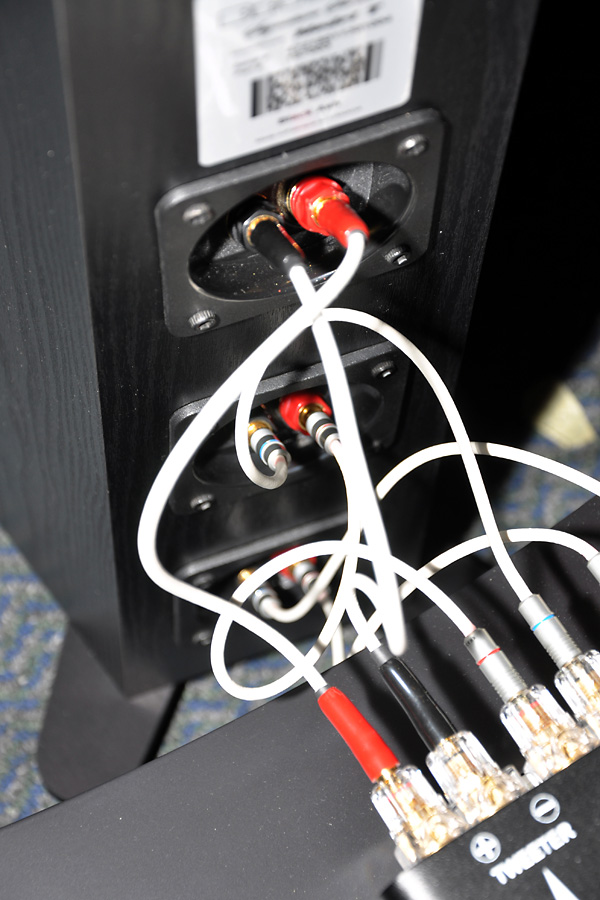
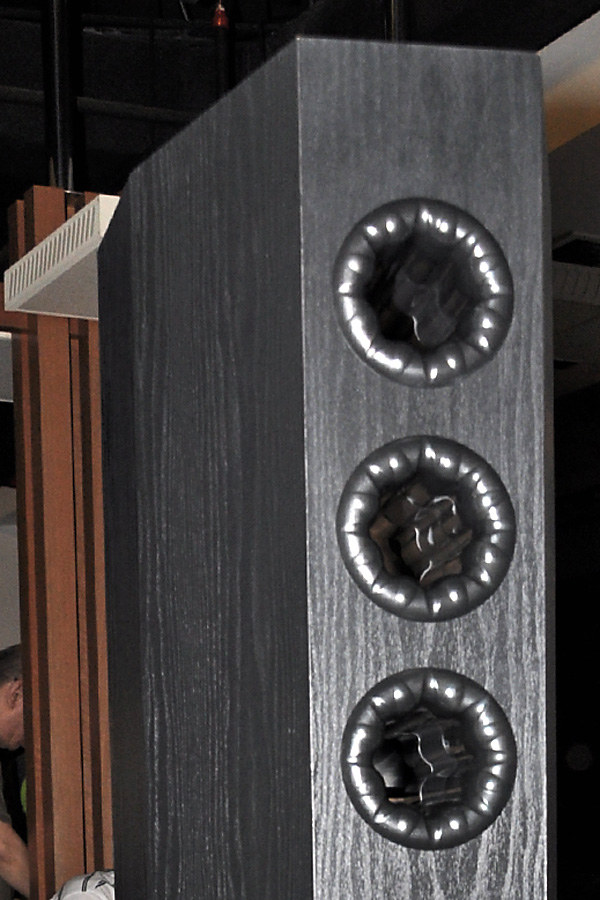
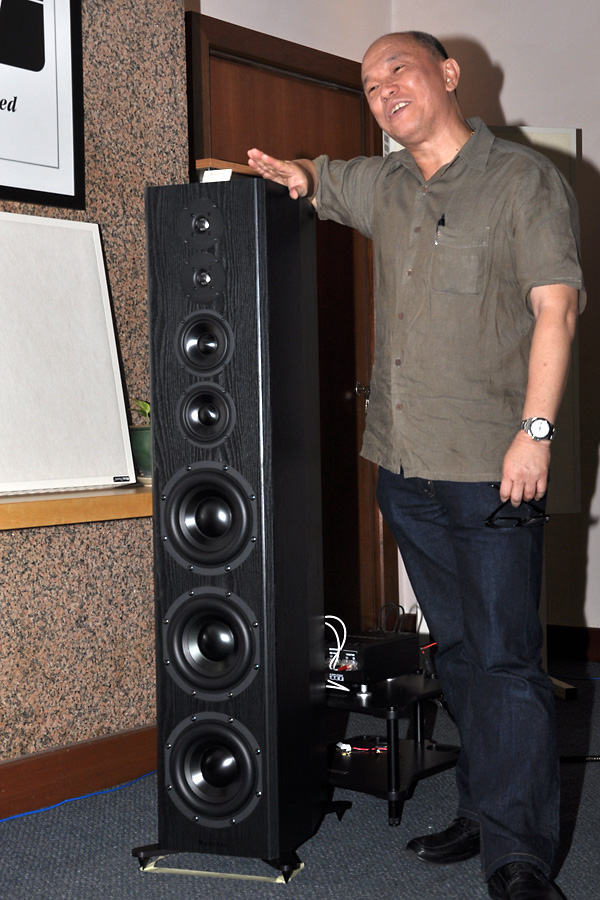
The problem with ports is they have what is called ‘port noise’ at very low frequencies when driven hard. The advantage of the sphincter is it reduces this noise if designed correctly.
Air travels faster through the center of a port than on the edges due to the air friction against the sides of the port. This modulation of different air speeds increases the port noise. The advantage in our port design is the friction at the edges is greatly reduced and the surface area the air travels over is greatly increased as well. The port is also smaller on the inside of the cabinet than the outside. What this adds up to is much less port noise under heavy drive conditions – long live the sphincter!!!!
James
Rear ports look like a sphincter?
[…] […]